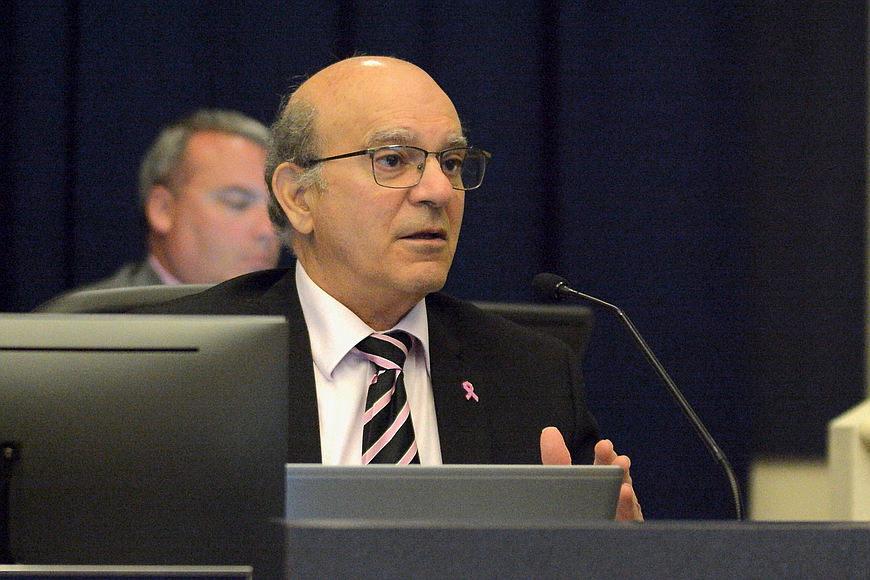- December 25, 2024
-
-
Loading

Loading

As the Flagler County Commission wraps up the design of its first Stormwater Management Plan, county attorney Al Hadeed said the commission has an opportunity to mitigate future stormwater problems with this maintenance plan.
“We can take the steps to mitigate the volume and degradation caused by stormwater,” Hadeed said. “It signals to the public that we’re going to start getting serious about stormwater.”
The Flagler County Commission is wrapping up the design of its first Stormwater Master Plan, which outlines a proactive response to stormwater management concerns in Flagler County. The county hired the firm Geosyntec Consultants in December 2021 to study Flagler County and create the plan alongside county staff.
The study identified 60 potential capital improvement projects and further narrowed that list to a top 20 projects to allow the county to begin implementing a 10-year plan. Of the identified top 20 projects, 10 are in the Flagler County’s Daytona North area.
Geosyntec consultant Mark Ellard presented the master plan to the commission at a March 4 workshop meeting.
The master plan will be on the Flagler County Commission’s March 18 agenda, where the commission will vote on adopting it.
“Public support for it is going to be very critical,” Hadeed said.
Some of the county’s stormwater issues “scream for coordination” between Flagler and neighboring counties, Hadeed said. It’s important the county addresses stormwater and continues to adopt standards that treat “stormwater as a serious matter.”
“Failure on this score,” Hadeed said, “imposes the responsibilities on the local government to correct.”
Ellard said the county’s response to stormwater is currently “reactive,” meaning the county responds to complaints and maintains safety needs. A proactive response implements more inspections and fixing issues before they become larger problems, he said.
To be more in line with the proactive approach, Ellard said the study recommends an additional three stormwater personnel, bringing it up to 10 dedicated stormwater staff, and adding additional equipment.
To support the additions, the county would need an estimated stormwater budget of $2.3 million per year, he said. Stormwater now has a budget of $1.1 million which is funded in part by the county’s gas tax.
The $2.3 million per year allows for a five-year maintenance schedule, Ellard said.
The county will need to implement a revenue source, Ellard said, like an additional sales tax or adding a stormwater utility fee. The county can also apply for grant funding to help pay for some of the projects.
The county already has $2.2 million in grant funding from the American Rescue Plan Act that must be designated for a project by the end of 2024 and used by 2026. The AARPA funds must be used on either the design or construction of a stormwater improvement project or undertaking a “thorough analysis” of funding solutions, Ellard said.
Commission Chair Andy Dance said he would like to see a detailed list of where more potential grant funding could come from.
“I want to know exactly which agency we go refer to and call to, I want to know what the grant is called, and how it applies to our list of 20 projects,” Dance said. “We need to be able to have a more detailed follow through on grant opportunities.”
Ellard said it could cost around $70 million to complete the top 20 projects over the course of 10 years.
Commissioner Leann Pennington said she was concerned about some of the top 20 projects. Some of them, she said, were not in areas that are heavily populated, referencing Rima Ridge, which has three projects identified in the top 20 list. Adopting the plan does not limit the county from reorganizing which projects are tackled first.
“Once the plan is implemented, we can move projects as, you know, based on more need, necessity, population, property, value life, all that,” she said.